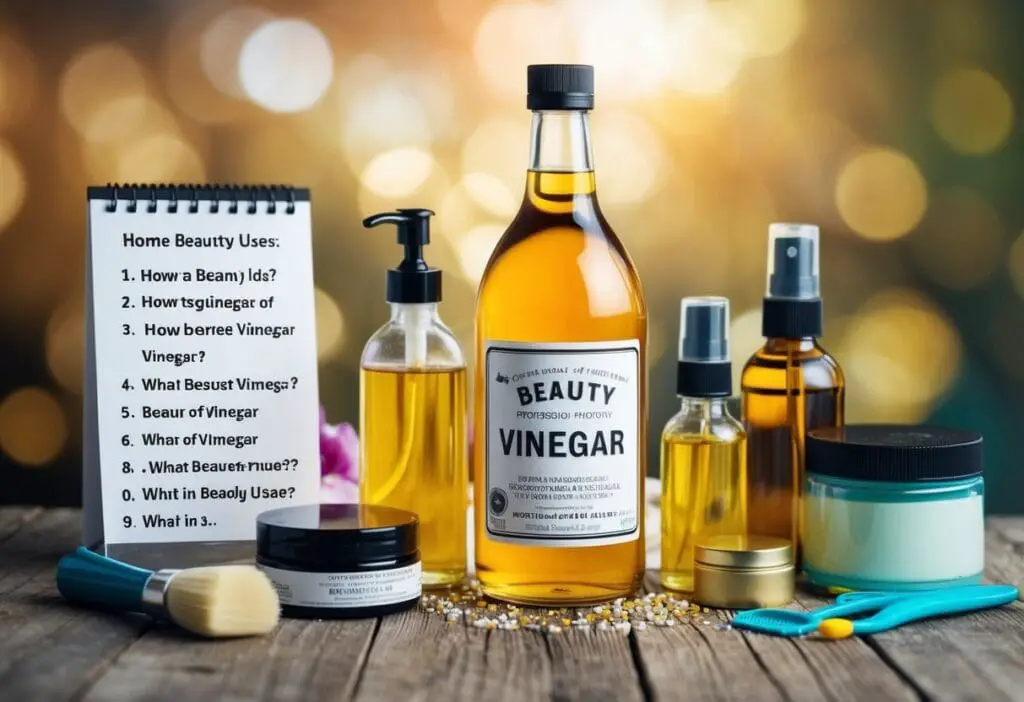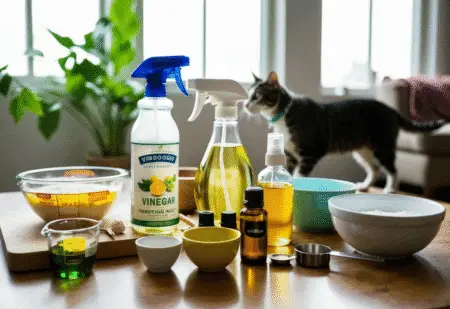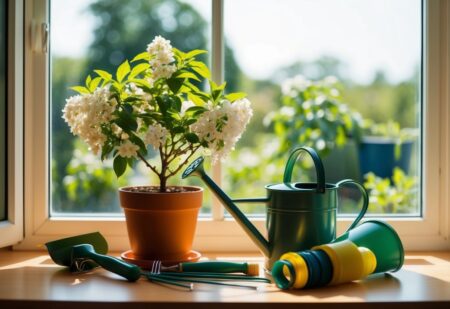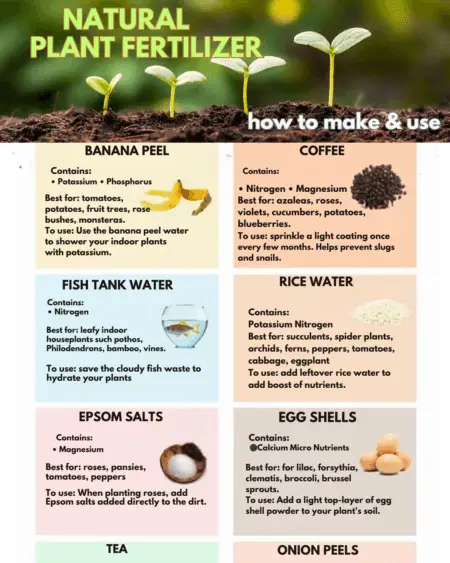Vinegar is an incredibly versatile ingredient that has numerous applications beyond just cooking. It can be effectively used for various household tasks, from cleaning and deodorizing to personal care and outdoor uses. Its unique properties make it a helpful ally in everyday life.
Many people are surprised to learn that vinegar can also play a role in beauty and personal care. It can be used as a natural toner for the skin, helping to balance pH levels and reduce acne. Its antifungal properties can help with various skin concerns, making it a great addition to daily routines.
Whether for home maintenance or personal care, vinegar proves to be an invaluable resource.
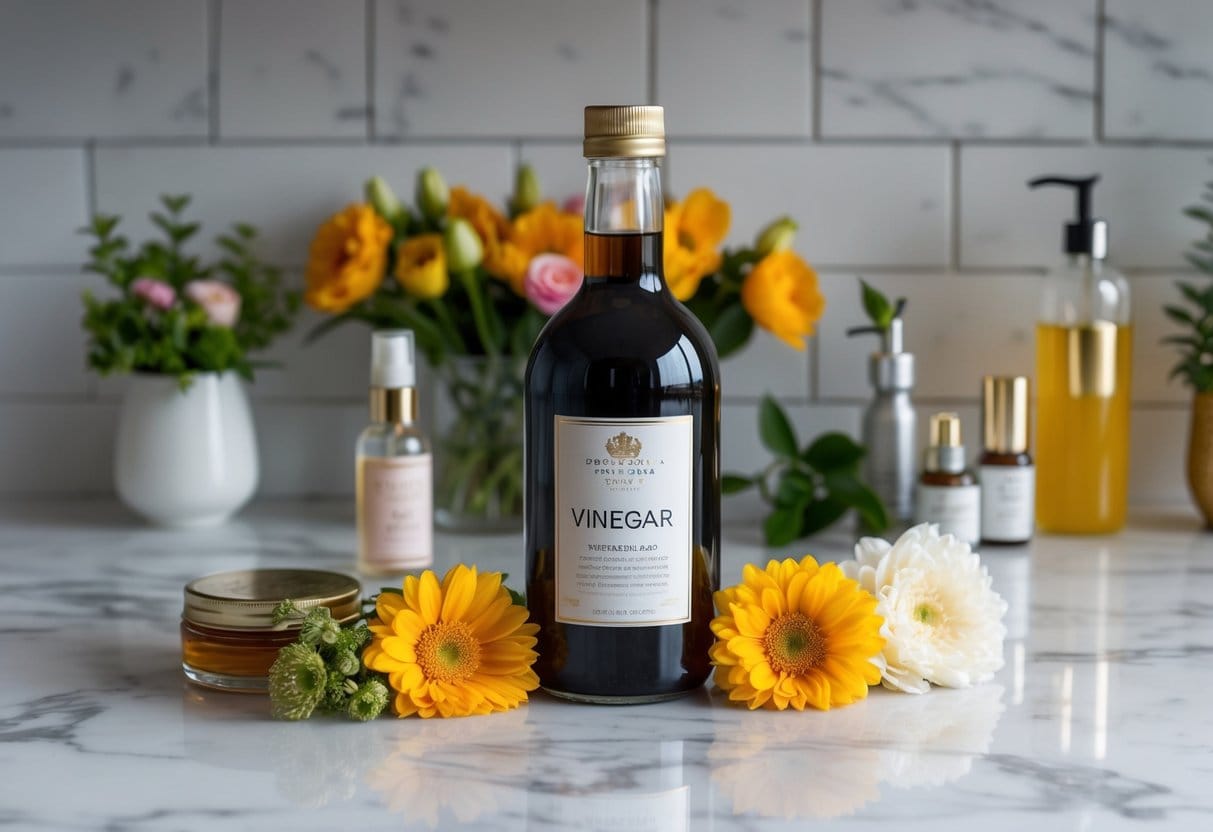
Key Takeaways
- Vinegar can effectively clean and deodorize many household items.
- It has benefits for skin health, working as a toner and acne treatment.
- Vinegar serves various roles, from kitchen ingredient to beauty product.
Home Uses
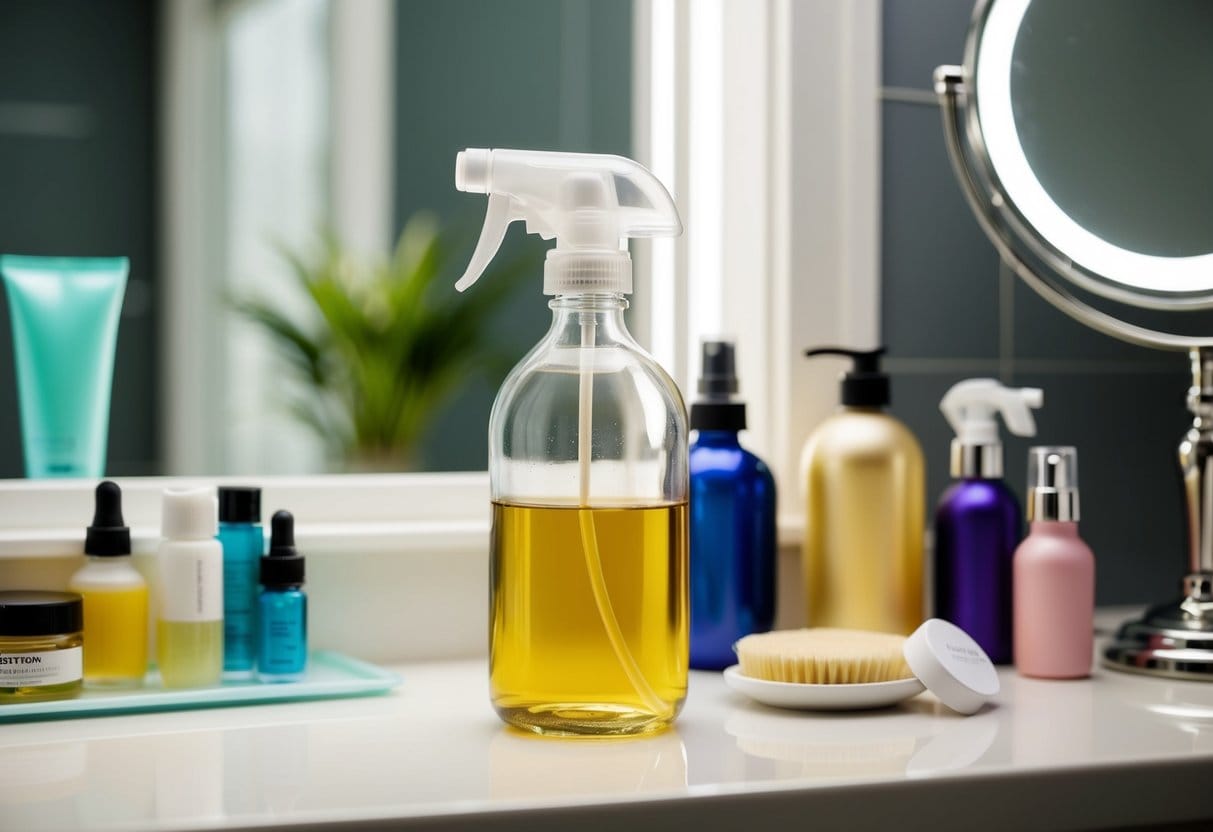
Vinegar is an effective and versatile ingredient for various household tasks. It can help with cleaning, deodorizing, and even pest control. Here are some useful ways to incorporate it into daily routines.
1. Mosquito Trap
To create a simple trap for mosquitoes, dissolve ¼ cup of brown sugar in 1 cup of hot water. Add a few drops of dish soap and a gram of yeast. Finally, mix in some apple cider vinegar and place the trap in a sunny location. The mixture will attract mosquitoes and trap them effectively.
2. Clean & Deodorize Microwave
For a fresh microwave, combine 1 cup of water with ¼ cup of white vinegar in a microwave-safe bowl. Heat the mixture for a few minutes. Afterward, leave the bowl inside for an additional 5 minutes. Use a cotton cloth to wipe down the microwave’s interior, removing stains and odors.
3. Clean Burnt Pans
To clean burnt aluminum pans, combine equal parts water and white vinegar in the pot. Simmer for 10 minutes, then remove from heat. Scrub with a scouring pad, rinse, and wash with dish soap to restore the pan’s surface.
4. Fix Scratches on Wooden Furniture
Mix ½ cup of vinegar with ½ cup of olive oil. Use a cloth to apply this mixture to scratched areas of wood furniture. Buffing the surface can help conceal the scratches and enhance the wood’s appearance.
5. Remove Wrinkles from Clothes
Create a wrinkle-release spray by mixing 3 parts water with 1 part white vinegar. Adding a few drops of lavender or jasmine essential oil can provide a pleasant scent. Lightly spritz the solution over wrinkled clothes and allow them to air dry.
6. Remove Stickers
To remove stickers, dampen a tissue with white vinegar and apply it to the sticker. Let it sit for a few minutes to loosen the adhesive, and then scrape the sticker off. Wipe the area with a damp cloth for a clean finish.
7. Clean Copper Pots & Pans
For shiny copper cookware, mix white vinegar and salt. Apply this mixture to the copper surface and let it sit for about 10 minutes. Use a non-abrasive scrubbing pad to scrub away tarnish, then rinse and wash as usual.
8. Clean Ink Stains from Clothes
For ballpoint pen ink stains, apply white vinegar to a cloth and blot the stain. Repeat until the ink begins to fade, and then launder the clothing as per usual.
9. Remove Pet Stains from Carpet
Mix ½ cup of vinegar with ½ cup of warm water. Pour this solution over the stain and let it soak for 10 minutes. Scrub with an old toothbrush and dry with a paper towel. Vacuum or allow the area to air dry, which will also help eliminate odors.
10. Remove Water Rings from Wooden Furniture
To treat water rings on wood, mix ½ cup of vinegar with ½ cup of olive oil. Apply this combination to the affected area and let it sit for a few minutes before wiping it clean with a cloth.
11. Remove Tea/Coffee Stains from Carpet
Blot the stain with paper towels. Then, apply a mix of equal parts white vinegar and warm water to the stained area. After the stain lifts, blot dry and either vacuum or allow it to air dry.
12. Clean Window Blinds
For spotless window blinds, combine equal parts white vinegar and hot water. Dip a cloth into this solution and wipe down the blinds to remove dust and grime.
13. Deodorize Drains & Unclog Blocked Drains
To help clear clogged drains, pour ¼ cup of baking soda followed by ½ cup of white vinegar down the drain. After allowing the mixture to sit for a few minutes, flush the drain with water to clear obstructions and eliminate odors.
14. Fruit Fly Trap
In a deep container, mix apple cider vinegar with a few drops of dish soap and add a banana peel. The scent will attract fruit flies, trapping them in the mixture.
15. Clean Stainless Steel Fixtures
For streak-free stainless steel, spray undiluted white vinegar directly onto the fixtures and wipe clean with a cotton cloth for a shiny finish.
Beauty & Personal Care Uses
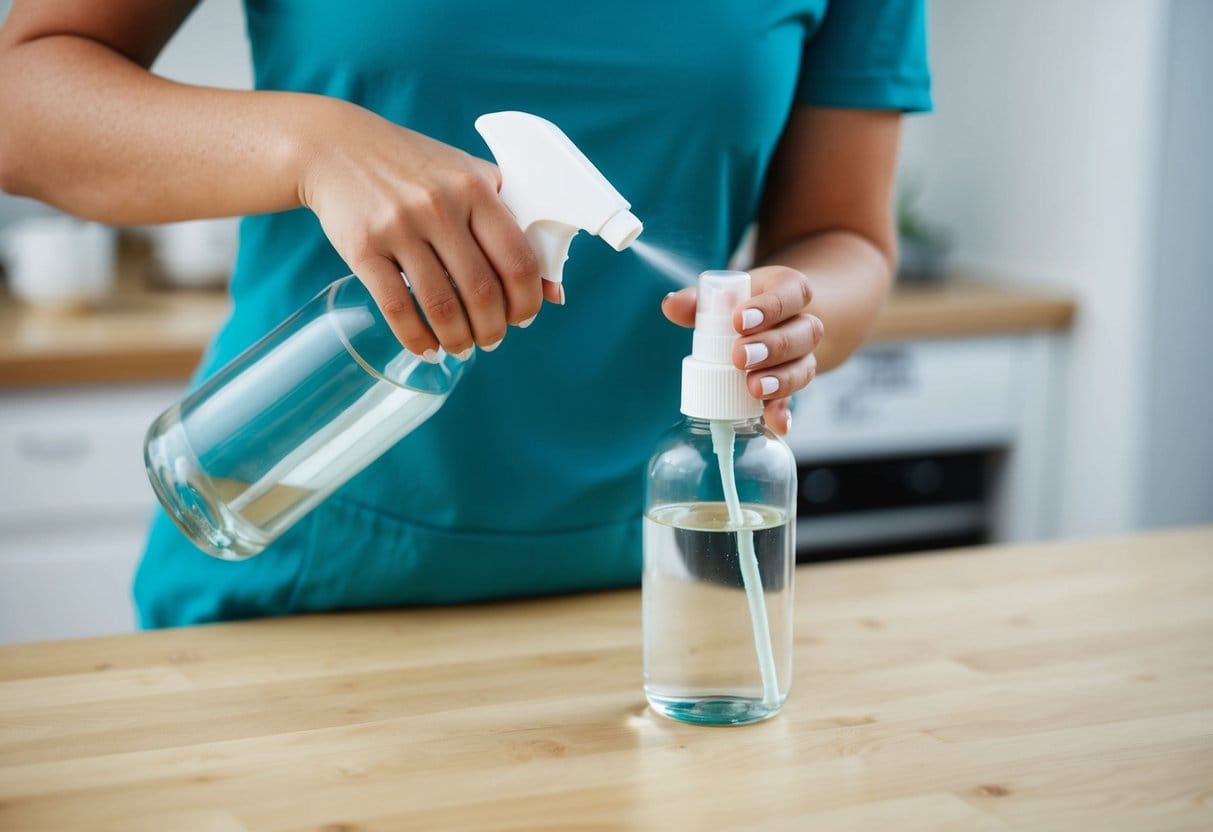
To enhance scalp health and reduce hair loss, one can blend apple cider vinegar (with the mother) and water. After shampooing, this mixture is massaged into the scalp and rinsed out after ten minutes to eliminate buildup.
Uses in the Garden
Creating an effective weed killer is simple. Combine 1 cup of salt, 1 tablespoon of dish soap, and 1 gallon of vinegar. This solution can be sprayed directly on weeds while avoiding nearby plants.
To repel fleas from pets, mix 8 ounces of water, 4 ounces of apple cider vinegar, and 1 teaspoon of coconut oil. Daily application of this spray will help protect pets naturally.
Frequently Asked Questions
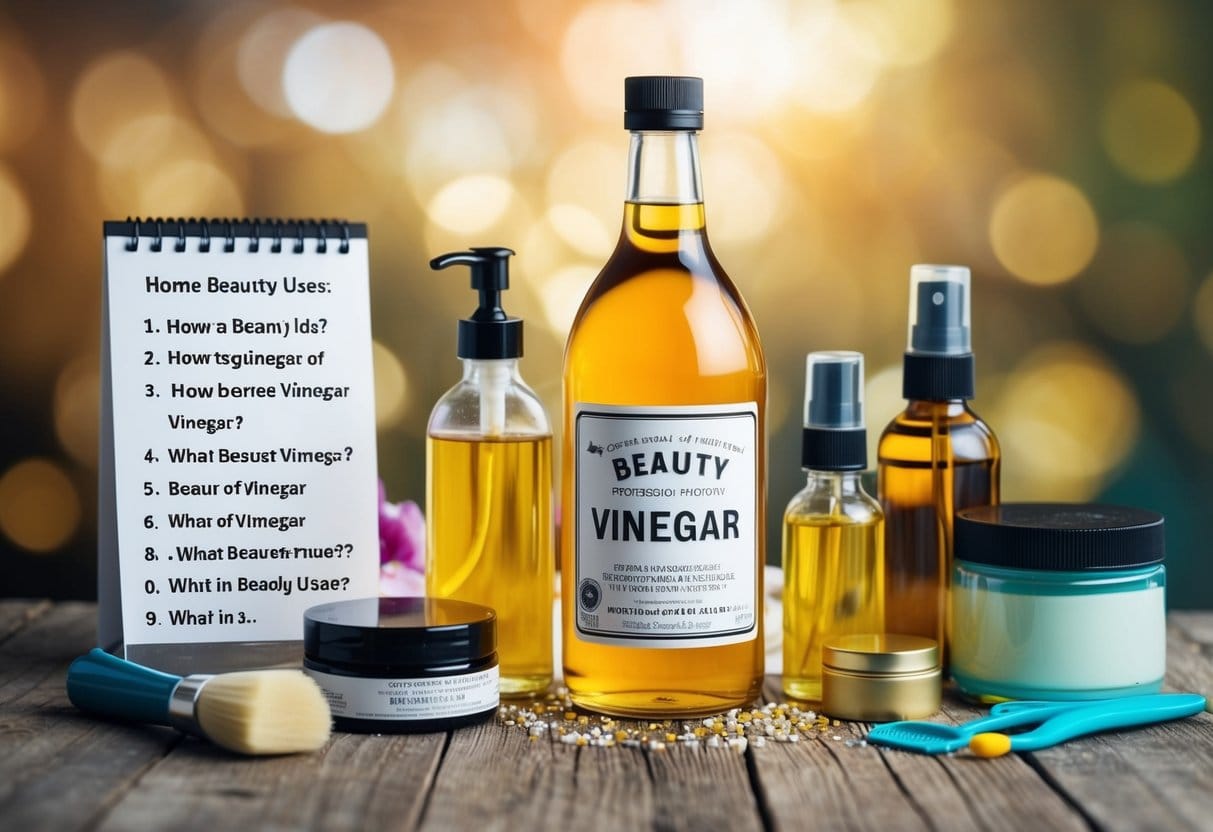
How can white vinegar be incorporated into beauty routines at home?
White vinegar can serve multiple purposes in beauty routines. It is often used as a natural toner due to its ability to balance skin pH. When diluted with water, it can be applied to the skin to help with minor irritations and can also be used as a rinse for hair to enhance shine and clarity.
What are the possible adverse effects of applying apple cider vinegar on the face?
Using apple cider vinegar on the face can cause irritation in some individuals. Possible side effects may include redness, burning, or dryness, especially if applied undiluted. It is essential to conduct a patch test before widespread use to identify any adverse reactions.
Can consuming apple cider vinegar enhance skin brightness?
Drinking apple cider vinegar may contribute to overall skin health, potentially leading to a brighter appearance. This is due to its possible detoxifying properties and ability to support digestion, which can reflect in the skin’s health.
What are effective methods for treating blemishes and dark spots with apple cider vinegar?
Apple cider vinegar can be applied directly to the skin or mixed with other ingredients for spot treatments.
Common methods include creating a toner by diluting it with water. You can also combine it with honey for its soothing properties.
Regular application over time may help reduce the appearance of spots.
Is it safe to use apple cider vinegar for lightening skin?
Using apple cider vinegar for skin lightening has its advocates, but caution is advised.
While it may help in reducing the appearance of dark spots, overuse can lead to skin irritation. It is wise to consult with a dermatologist before using it for this purpose.
Are there advantages to leaving apple cider vinegar on the face overnight?
Leaving apple cider vinegar on the face overnight may provide benefits, such as improved skin tone and reduced blemishes. However, it is crucial to dilute it properly and monitor for any irritation. Also, using a hydrating moisturizer afterward can help counteract any dryness.


